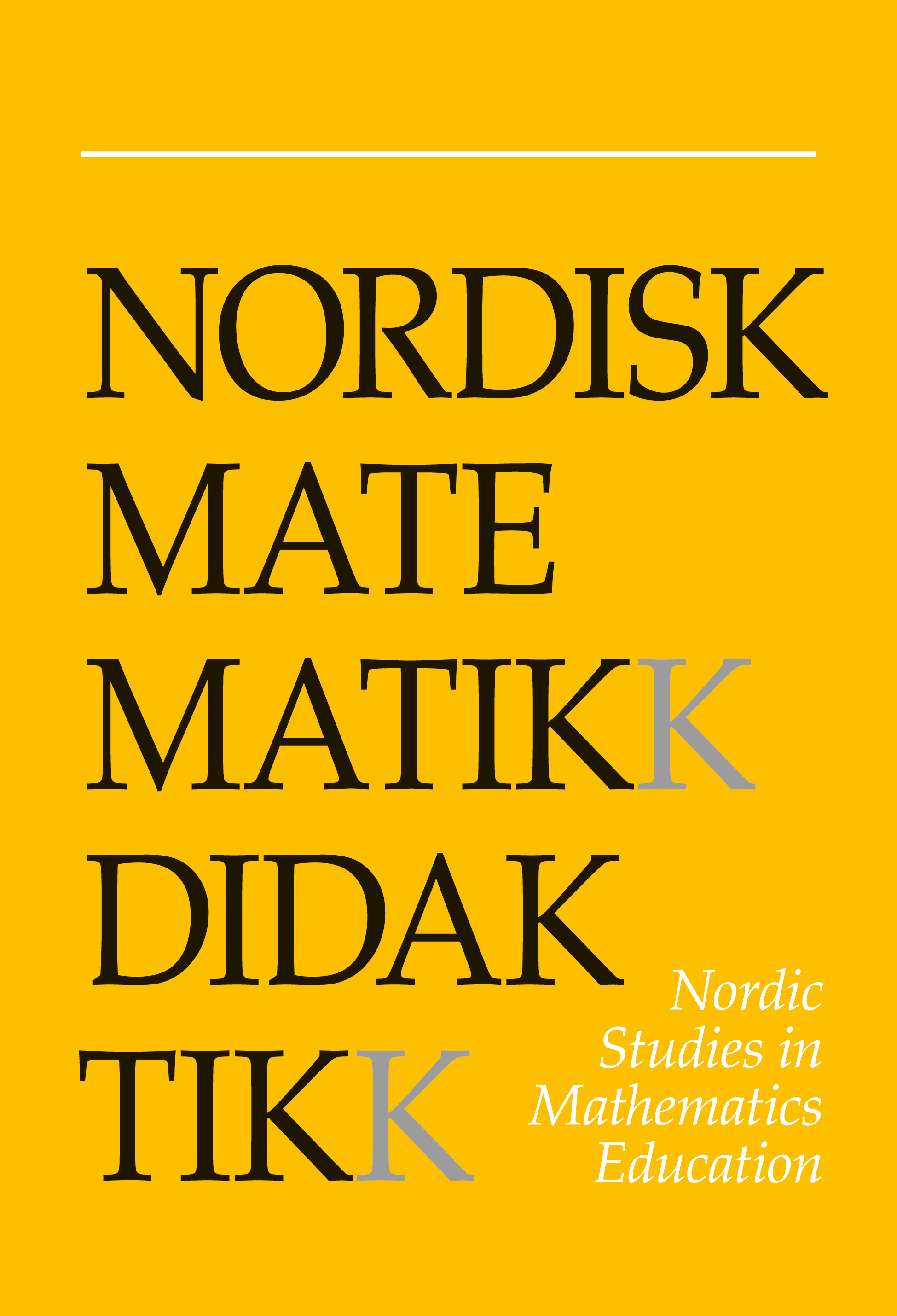The case of Brandon: the dual nature of key ideas in the classroom
DOI:
https://doi.org/10.7146/nomad.v14i2.148175Abstract
This paper looks at proof production in the midst of classroom interaction. The setting is a college level geometry course in which students are working on the following task: Prove that two parallel transported lines in the plane are parallel in the sense that they do not intersect. A proof of this statement is traced from a student’s idea, through a small group discussion, to a large class discussion moderated by a teacher. As the proof emerges through a series of increasingly public settings we see ways in which the key idea of the proof serves to both open and close class discussion. We look at several examples of opening and closing, showing how not only the key idea, but also the warrants and justifications connected to it, play an important role in the proof development.
References
Balacheff, N. (1988). Aspects of proof in pupils' practice of school mathematics. In D. Pimm (Ed.), Mathematics, teachers and children (pp. 216-230). London: Hodder & Stoughton.
Cobb, P. (2000). Conducting teaching experiments in collaboration with teachers. Mahwah, NJ: Lawrence Erlbaum.
Fischbein, E. (1987). Intuition in science and mathematics: an educational approach. Dordecht, The Netherlands: D. Reidel.
Henderson, D. (2001). Experiencing geometry in Euclidean, spherical, and hyperbolic spaces. Upper Saddle River, NJ: Prentice Hall.
Inglis, M., Mejia-Ramos, J. & Simpson, A. (2007). Modelling mathematical argumentation: the importance of qualification. Educational Studies in Mathematics, 66 (1), 3-21. https://doi.org/10.1007/s10649-006-9059-8
Raman, M. (2003). Key ideas: What are they and how do they help us understand people's views of proof? Educational Studies in Mathematics 52, 319-325. https://doi.org/10.1023/A:1024360204239
Raman, M. (2004). Key ideas: the link between private and public aspects of proof. In D. McDougal & J. Ross (Eds.), Proceedings of the 26th annual meeting of the North American Chapter of the International Group for the Psychology of Mathematics Education (Vol. 2, pp. 635-638). Toronto: OISE/UT.
Raman, M. & Weber, K. (2006). Key ideas and insights in the context of three high school geometry proofs. Mathematics Teacher, 99 (9), 644-649. https://doi.org/10.5951/MT.99.9.0644
Rasmussen, C. & Stephan, M. (2008). A methodology for documenting collective activity. In A. E. Kelly, R. A. Lesh & J. Y. Baek (Eds.), Handbook of innovative design research in science, technology, engineering, mathematics (STEM) education (pp. 195-215). Mahwah, NJ: Lawrence Erlbaum.
Schoenfeld, A. (1991). On mathematics as sense-making: an attack on the unfortunate divorce of formal and informal mathematics. In J. F. Voss, D. Perkins & J.W. Segal (Eds.), Informal reasoning and education (pp. 311-343). Hillsdale, NJ: Erlbaum.
Selden, A. & Selden, J. (2003). Validation of proofs considered as texts: Can undergraduates tell whether an argument proves a theorem? Journal for Research in Mathematics Education, 34 (1), 4-36. https://doi.org/10.2307/30034698
Sfard, A. (2008). Thinking as communicating. Cambridge, UK: Cambridge University Press. https://doi.org/10.1017/CBO9780511499944
Toulmin, S. (1969). The uses of argument. Cambridge, UK: Cambridge University Press.
Templeton, D. (2007, January 16). Pitt math teacher took best shot at cannonball conjecture. Pittsburgh Post-Gazette. Retrieved January 18, 2007 from http://www.post-gazette.com/pg/07016/754107-115.stm.
Viholainen, A. (2008). Prospective mathematics teachers' informal and formal reasoning about the concepts of derivative and differentiability (Ph.D. Dissertation). Department of Mathematics and Statistics, University of Jyväskylä.
Weber & Alcock. (2004). Semantic and syntactic proof productions. Educational Studies in Mathematics, 56 (2-3), 209-234. https://doi.org/10.1023/B:EDUC.0000040410.57253.a1
Zandieh, M., Larsen, S. & Nunley, D. (2008). Proving starting from informal notions of symmetry and transformations. In M. Carlson & C. Rasmussen (Eds.), Making the connection: research and teaching in undergraduate mathematics. Amherst, MA: Mathematical Association of America. https://doi.org/10.5948/UPO9780883859759.011
Downloads
Published
How to Cite
Issue
Section
License

This work is licensed under a Creative Commons Attribution-NonCommercial-ShareAlike 4.0 International License.



